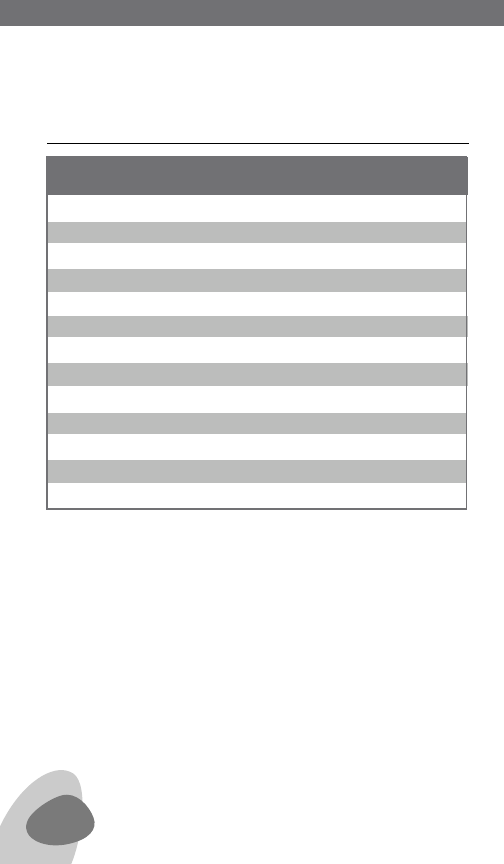
BAND
KILOHERTZ (kHz)
MEGAHERTZ (MHz)
120 m 2,300 - 2,495 MHz 2300 - 2495 kHz
90 m 3,20 - 3,40 MHz 3200 - 3400 kHz
75 m 3,90 - 4,05 MHz 3900 - 4050 kHz
60 m 4,750 - 5,1 MHz 4750 - 5100 kHz
49 m 5,73 - 6,3 MHz 5730 - 6300 kHz
41 m 6,89 - 7,60 MHz 6890 - 7600 kHz
31 m 9,25 - 9,95 MHz 9250 - 9995 kHz
25 m 11,5 - 12,2 MHz 11500 - 12200 kHz
22 m 13,57 - 13,87 MHz 13570 - 13870 kHz
19 m 15,005 - 15,825 MHz 15005 - 15825 kHz
16 m 17,48 - 17,9 MHz 17480 - 17900 kHz
15 m 18,9 - 19,02 MHz 18900 - 19020 kHz
13 m 21,45 - 21,85 MHz 21450 - 21850 kHz
16 INTRODUCTION TO SHORTWAVE continued
SOME BASIC RULES OF THUMB
• In general, the bands with frequencies below 13 mHz (13000 kHz)
are better at night and the bands with frequencies above 13 mHz
(13000 kHz) are best during the day. The best daytime shortwave
bands are 13, 15, 16, 19, and 22 meters; 16 and 19 usually the best.
At night, the best bands are 25, 31, 41 and 49 meters, with 31 and
49 usually best.
• Around sunset and sunrise, both the day and night bands may be
exceptionally good.
• Shortwave reception is usually better in the winter than at other
times of year.
• Because the construction materials of some buildings severely
32
E5 OWNER’S MANUAL


















